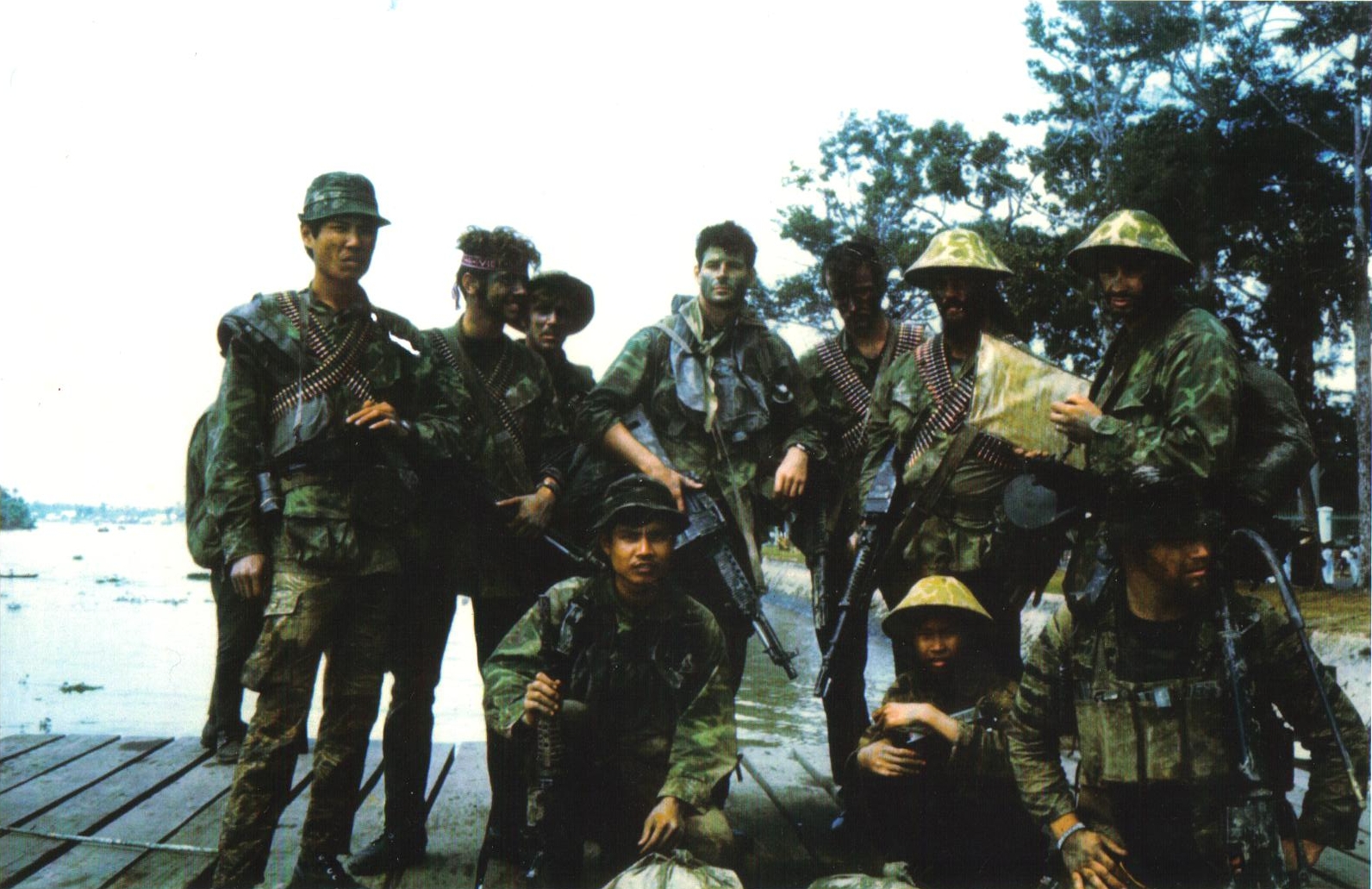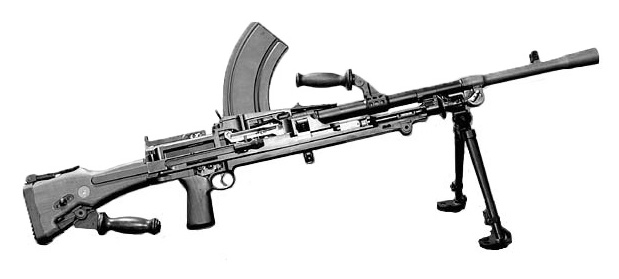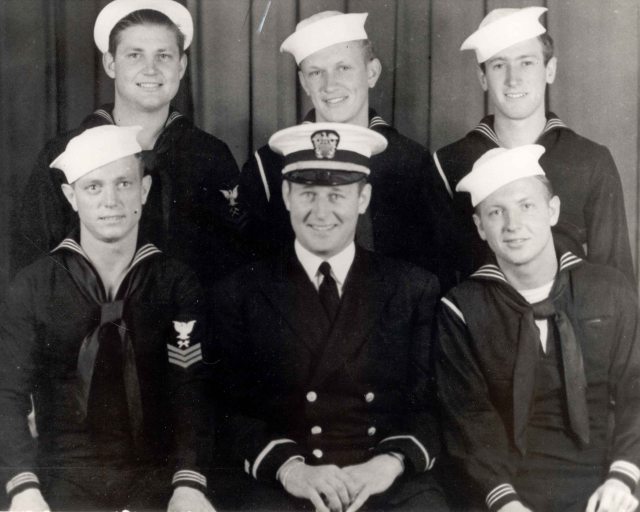|
Stoner 63
The Stoner 63 is a 5.56×45mm NATO modular weapon system. Using a variety of modular components, it can be configured as an assault rifle, carbine, top-fed light machine gun, belt-fed squad automatic weapon, or as a vehicle mounted weapon. Also known as the M63, XM22'', ''XM23, XM207 or the Mk 23 Mod 0 machine gun, it was designed by Eugene Stoner in the early 1960s. Cadillac Gage was the primary manufacturer of the Stoner 63 during its history. The Stoner 63 saw very limited combat use by United States forces during the Vietnam War. A few were also sold to law enforcement agencies. History Development Soon after leaving ArmaLite, Eugene Stoner, one of the United States' most prolific modern military small arms designers, responsible for the design of the ArmaLite AR-15/ M16 assault rifles, ArmaLite AR-10 battle rifle and Armalite AR-7 survival rifle, among others,Kokalis, Peter: ''Weapons Tests And Evaluations: The Best Of Soldier Of Fortune'', page 160. Paladin Press, 2001 ... [...More Info...] [...Related Items...] OR: [Wikipedia] [Google] [Baidu] |
Modular Weapon System
A modular weapon system (MWS) is any weapon equipment which has removable core components (or "modules") that can be reconfigured/interchanged to give the weapon different capabilities to adapt to various applications. Modularity can provide several advantages to military organizations, such as the versatility of allowing units to quickly tailor their weapons to best suit the immediate tactical needs, to quickly repair/exchange malfunctioned components, and to reduce overall logistical burdens and costs. However, it also make the legal tracking and technical categorization of a weapon more complicated as it can now be easily converted into a diverse variety of different forms.* For example, the Stoner 63 is a 5.56×45mm NATO-caliber modular small arm system using a variety of modular components, which can be configured as a rifle, a carbine, a top-fed light machine gun, a belt-fed squad automatic weapon, or a vehicle mounted weapon. A modular firearm can also be useful for h ... [...More Info...] [...Related Items...] OR: [Wikipedia] [Google] [Baidu] |
M27 Link
The M27 link, formally Link, Cartridge, Metallic Belt, 5.56mm, M27 is a metallic disintegrating link issued by the United States armed forces and among NATO and designed for use in belt-fed firearms. It holds 5.56×45mm NATO ammunition. History The first scaled-down version of the mid-20th century M13 link was developed in the early 1960s for the Stoner 63 belt-fed light machine gun/squad automatic weapon and designated as the "S-63 BRW" link. In the early 1970s this scaling-down concept was further developed. The resulting modified link had a slightly different angle of pitch and was adapted as the M27 link for use with the FN Minimi/M249 SAW. The M27 link is used on the FN Minimi/M249, HK23, MG4, CETME Ameli, K3, Mini-SS and Negev, among others. Design details Each M27 link consists of a single piece of metal curved into two partial cylinders, into which adjacent rounds slide. Like the M13 link, the M27 link is a push-through design. Rounds are extracted by pushing forward ... [...More Info...] [...Related Items...] OR: [Wikipedia] [Google] [Baidu] |
ArmaLite
ArmaLite, or Armalite, is an American small arms engineering company, formed in the early 1950s, in Hollywood, California. Many of its products, as conceived by chief designer Eugene Stoner, relied on unique foam-filled fiberglass butt/stock furniture, and a composite barrel using a steel liner inside an aluminum sleeve, including the iconic AR15/ M16 family. While the original ArmaLite ceased business in the 1980s, the brand was revived in 1996, by Mark Westrom. Originating as the light firearms division of Fairchild Engine and Airplane Corporation, ArmaLite was formally incorporated in 1954. Stoner's first design, the AR-1 Parasniper (dating from 1952), was relatively unsuccessful. However, in 1956, when ArmaLite competed in a contest for an aircrew survival rifle, its AR-5 and AR-7 designs were put into production and adopted by elements of the US military. The following year, ArmaLite also competed for the contract for a new main US combat rifle, in the NATO standard 7.62 m ... [...More Info...] [...Related Items...] OR: [Wikipedia] [Google] [Baidu] |
Navy SEALS Juliet Platoon
A navy, naval force, or maritime force is the branch of a nation's armed forces principally designated for naval and amphibious warfare; namely, lake-borne, riverine, littoral, or ocean-borne combat operations and related functions. It includes anything conducted by surface ships, amphibious ships, submarines, and seaborne aviation, as well as ancillary support, communications, training, and other fields. The strategic offensive role of a navy is projection of force into areas beyond a country's shores (for example, to protect sea-lanes, deter or confront piracy, ferry troops, or attack other navies, ports, or shore installations). The strategic defensive purpose of a navy is to frustrate seaborne projection-of-force by enemies. The strategic task of the navy also may incorporate nuclear deterrence by use of submarine-launched ballistic missiles. Naval operations can be broadly divided between riverine and littoral applications (brown-water navy), open-ocean applicati ... [...More Info...] [...Related Items...] OR: [Wikipedia] [Google] [Baidu] |
Squad Automatic Weapon
A squad automatic weapon (SAW), also known as a section automatic weapon or light support weapon (LSW), is a man-portable automatic firearm attached to infantry squads or sections as a source of rapid direct firepower. Weapons fulfilling this role can be light machine guns, or modified selective-fire rifles fitted with a heavier barrel, bipod and a belt/drum-fed design. Squad automatic weapons usually fire the same cartridge (though heavier-bullet variants are preferred) as the assault rifles or battle rifles carried by other members of the unit. This reduces logistical requirements by making it only necessary to supply one type of service ammunition to a unit. These weapons are light enough to be carried and operated by one infantryman, unlike medium machine guns (such as the M1919 Browning) that require a crew to operate at full effectiveness; or heavy machine guns (such as the M2 Browning or the DShK) which fire more powerful cartridges but are also crew-served and typica ... [...More Info...] [...Related Items...] OR: [Wikipedia] [Google] [Baidu] |
Belt-fed
upright=1.35, An M60 machine gun belt loaded with 7.62×51mm NATO cartridges, aboard a U.S. Navy">7.62×51mm_NATO.html" ;"title="M60 machine gun belt loaded with 7.62×51mm NATO">M60 machine gun belt loaded with 7.62×51mm NATO cartridges, aboard a U.S. Navy patrol craft An ammunition belt is a firearm device used to package and feed cartridge (firearms), cartridges, typically for rapid-firing automatic weapons such as machine guns. Belt-fed systems minimize the proportional weight of the ammunition apparatus to the entire weapon system, and allow high rates of continuous fire without needing frequent magazine changes. The capacity of belts and associated belt containers is typically a function of weight and bulk, and their size is limited by caliber and the combined portability of the weapon and ammunition. The most common ammo capacity typically carried on a man-portable weapon system vary from 50 to 300 rounds. Variants Feed strip 8mm Lebel feed strip on an M1914 H ... [...More Info...] [...Related Items...] OR: [Wikipedia] [Google] [Baidu] |
Light Machine Gun
A light machine gun (LMG) is a light-weight machine gun designed to be operated by a single infantryman, with or without an assistant, as an infantry support weapon. LMGs firing cartridges of the same caliber as the other riflemen of the same combat unit are often referred to as squad automatic weapons. Characteristics While early light machine guns fired full-powered rifle cartridges, modern light machine guns often fire smaller-caliber rifle cartridges than medium machine guns – generally the same intermediate cartridge fired by a service's standard assault rifle – and are usually lighter and more compact. Some LMGs, such as the Russian RPK, are modifications of existing designs and designed to share the same ammunition. Adaptations to the original rifle generally include a larger magazine, a heavier barrel to resist overheating, a more robust mechanism to support sustained fire and a bipod. A light machine gun is also defined by its usage as well as its specificati ... [...More Info...] [...Related Items...] OR: [Wikipedia] [Google] [Baidu] |
Carbine
A carbine ( or ) is a long gun that has a barrel shortened from its original length. Most modern carbines are rifles that are compact versions of a longer rifle or are rifles chambered for less powerful cartridges. The smaller size and lighter weight of carbines make them easier to handle. They are typically issued to high-mobility troops such as special operations soldiers and paratroopers, as well as to mounted, artillery, logistics, or other non-infantry personnel whose roles do not require full-sized rifles, although there is a growing tendency for carbines to be issued to front-line soldiers to offset the increasing weight of other issued equipment. An example of this is the U.S. Army's M4 carbine, which is standard issue. Etymology The name comes from its first users — cavalry troopers called "carabiniers", from the French ''carabine'', from Old French ''carabin'' (soldier armed with a musket), whose origin is unclear. One theory connects it to an "ancient engine of w ... [...More Info...] [...Related Items...] OR: [Wikipedia] [Google] [Baidu] |
Modular Weapon System
A modular weapon system (MWS) is any weapon equipment which has removable core components (or "modules") that can be reconfigured/interchanged to give the weapon different capabilities to adapt to various applications. Modularity can provide several advantages to military organizations, such as the versatility of allowing units to quickly tailor their weapons to best suit the immediate tactical needs, to quickly repair/exchange malfunctioned components, and to reduce overall logistical burdens and costs. However, it also make the legal tracking and technical categorization of a weapon more complicated as it can now be easily converted into a diverse variety of different forms.* For example, the Stoner 63 is a 5.56×45mm NATO-caliber modular small arm system using a variety of modular components, which can be configured as a rifle, a carbine, a top-fed light machine gun, a belt-fed squad automatic weapon, or a vehicle mounted weapon. A modular firearm can also be useful for h ... [...More Info...] [...Related Items...] OR: [Wikipedia] [Google] [Baidu] |
Iron Sight
Iron sights are a system of physical alignment markers (usually made of metallic material) used as a sighting device to assist the accurate aiming of ranged weapons (such as a firearm, airgun, crossbow or even compound bow), or less commonly as a primitive finder sight for optical telescopes. The earliest sighting device, it relies completely on the viewer's naked eye (mostly under ambient lighting), and is distinctly different to optical sights such as telescopic sights, reflector (reflex) sights, holographic sights and laser sights, which make use of optical manipulation and/or active illumination, as well as the newer optoelectronics, which use digital imaging and even incorporate augmented reality. Iron sights are typically composed of two components mounted perpendicularly above the weapon's bore axis: a rear sight nearer (or ''proximally'') to the shooter's eye, and a front sight farther forward (or ''distally'') near the muzzle. During aiming, the shooter aligns his/ ... [...More Info...] [...Related Items...] OR: [Wikipedia] [Google] [Baidu] |
US Navy SEALs
The United States Navy Sea, Air, and Land (SEAL) Teams, commonly known as Navy SEALs, are the U.S. Navy's primary special operations force and a component of the Naval Special Warfare Command. Among the SEALs' main functions are conducting small-unit special operation missions in maritime, jungle, urban, arctic, mountainous, and desert environments. SEALs are typically ordered to capture or to kill high level targets, or to gather intelligence behind enemy lines. All active SEALs are members of the U.S. Navy. The CIA's highly secretive and elite Special Operations Group (SOG) recruits operators from SEAL Teams, with joint operations going back to the MACV-SOG during the Vietnam War. This cooperation still exists today, as evidenced by military operations in Iraq and Afghanistan. History Origins Although not formally founded until 1962, the modern-day U.S. Navy SEALs trace their roots to World War II. The United States Military recognized the need for the covert reconnaiss ... [...More Info...] [...Related Items...] OR: [Wikipedia] [Google] [Baidu] |








.jpg)

